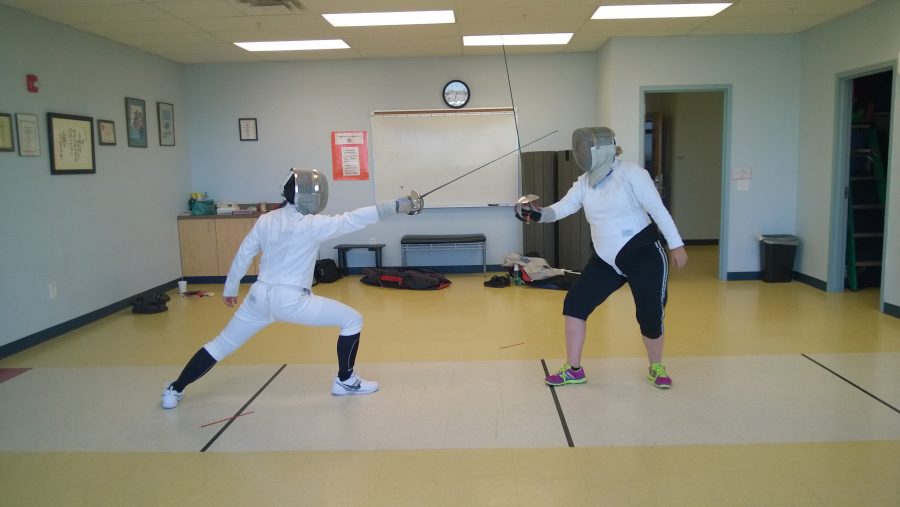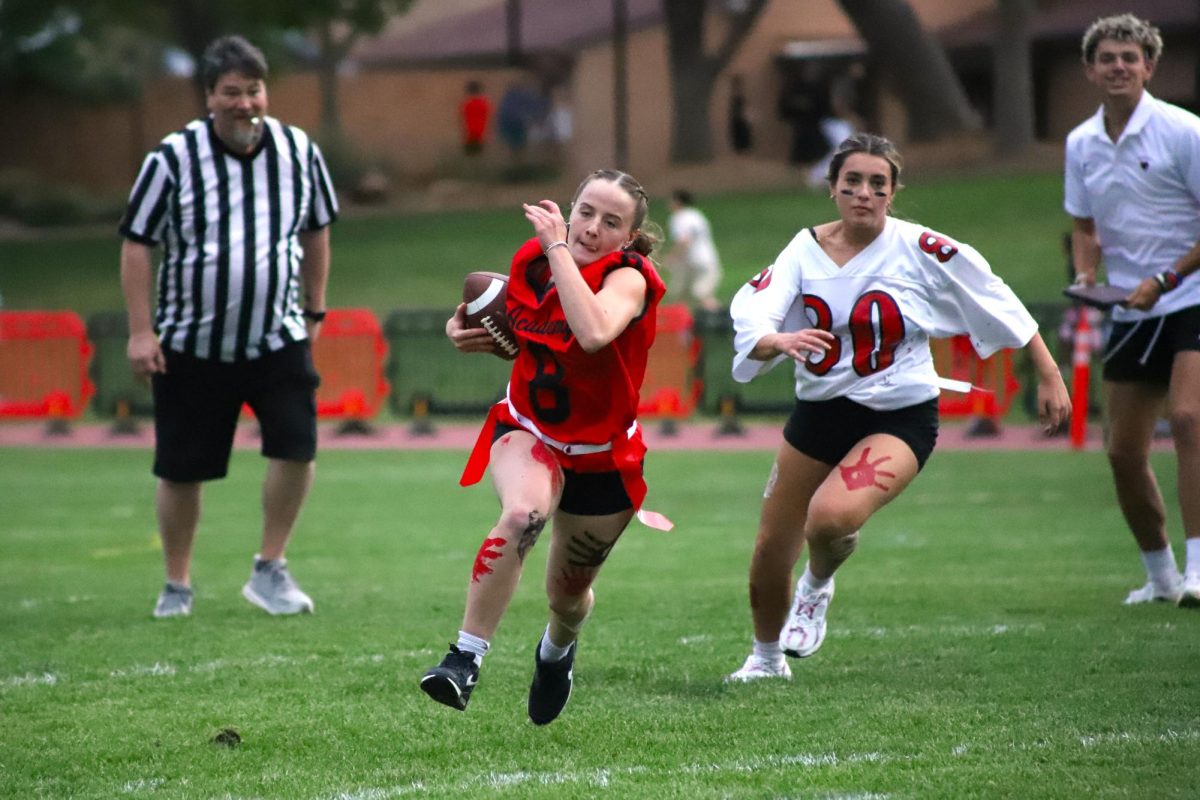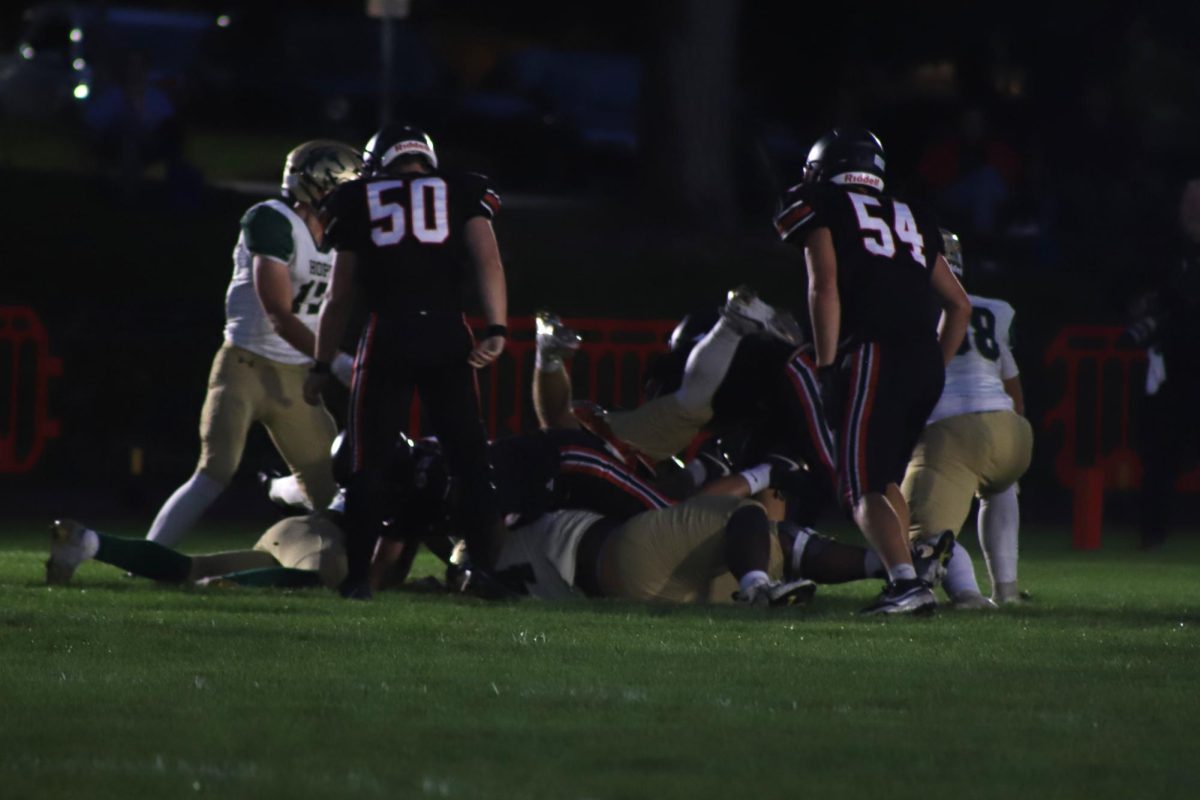 As the clock winds down, two contenders duel on a long narrow strip, each holding a saber in hand. In fencing, two swordsmen chase after the same thing – a win. They are neck-and-neck, until one fencer takes a leap and jabs straight ahead: victory at last.
As the clock winds down, two contenders duel on a long narrow strip, each holding a saber in hand. In fencing, two swordsmen chase after the same thing – a win. They are neck-and-neck, until one fencer takes a leap and jabs straight ahead: victory at last.
Alex Win ‘16 is an aspiring Junior Olympic fencer who recently competed at the Junior Olympic Fencing Championships in Richmond, Va. from Feb. 13-16. He competed in the Junior Men’s Saber and the Cadet Men’s Saber Finals, his favorite fencing event. “It was a really rare experience… something you don’t get in New Mexico,” Win said.
Win was introduced to the sport at the birthday of Connor Porter ‘16 at Duke City Fencing in Northeast Albuquerque. Porter asked him to join fencing there. Win had always been fascinated by the sport, but he had never actually tried it. However, his interest turned into a passion when he picked up the sword, and he started pursuing his strong interest for saber fencing shortly afterward.
Win trains regularly and enthusiastically to improve his techniques and footwork. He practices twice a week at Duke City Fencing with coaches Cynthia Villyard and Toby Tolley. “I fence to be active, and enjoy the great social scene. I plan on fencing as long as I can, but as more of a hobby than [as] a professional career,” Win said.
Fencing requires skill and physical fitness. There are different types of fencing events: foil, epee, and saber. In saber, the fencer who gets the point is the one who strikes against an opponent first. The sword used in saber fights is called a saber, a point-thrusting blade as well as a cutting weapon.
Fencing demands many sacrifices, including time, passion, and resources, but most importantly, it requires physical fitness – especially with regard to leg strength and footwork. “The difference between a good fencer and a great fencer is being in complete control of your body at all times,” Win said. Fencers constantly duel in a half-standing, half-sitting lunge position, which takes a great toll on their bodies. Common injuries associated with fencing include twisted ankles and hurt knees. Win has developed habits to avoid injury, including stretching, keeping in shape, staying in a good stance, and not pushing himself past the limit.
Win loves and pursues a passion for fencing because of the great sense of companionship and community associated with it. “There is a high sense of camaraderie and respect for each other,” Win said. “Everyone shares the same interest.” Win’s family, coaches, and fellow fencers also motivate and support him.
Although Win doesn’t have much interest in becoming a professional fencer, he still enjoys the sport as a hobby. He says that fencing is a very unique sport that not many people get the chance to do. According to Win, the motivation behind his ardor comes from cooperating with people that share the same passion and are so skilled. Fencing provides Win a great experience in which the excitement never ends, and a sense of brotherhood and respect that prevails during every second of the sport.








